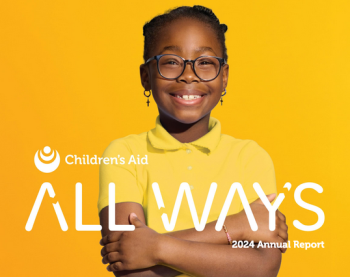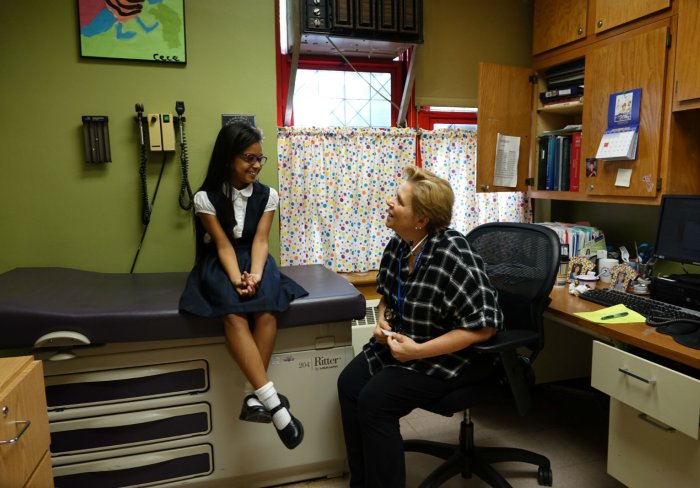September is Childhood Obesity Awareness Month, and Children’s Aid is proud to be a leader in this battle. Created in 2003, during the peak of the obesity crisis, the Go!Healthy initiative began offering nutrition-related programming through the Early Childhood division with the Go!Kids program. One specific study from this time period found that in a group of more than 3,000 New York City elementary school students, 43 percent of the students were overweight, and more than half of the overweight students were clinically obese. Hispanic and black children were identified as having higher rates of obesity than other groups, and today although the incidence of obesity in New York City youth has dropped overall, the disparity among children of color is still high.
According to the State of Obesity, an annual collaborative report by the Trust for America’s Health and the Robert Wood Johnson Foundation, overweight and obesity rates are higher among African American children when compared to White children.
Overall, in the U.S.:
- almost 21% of all African American girls were obese compared to about 16% of white girls.
- almost 20% of all African American boys were obese compared to almost 13% of white boys.
The same is true for Latino children with obesity rates being markedly higher in younger children. In children ages 2-5:
- Nearly 17% of all Latino children are obese compared to 3.5% of white children.
Between ages 6 to 11, twice the amount of Latino children are obese compared to white children.
- 26% of all Latino children are obese compared to 13% of white children.
Through the Go!Healthy program, Children’s Aid works to educate youth and their families around healthy eating habits, with the intention of reducing these marked percentages in our four neighborhoods: Washington Heights, the South Bronx, Harlem, and northern Staten Island. These neighborhoods are home to large populations of African American and Latino families, and the programming that Go!Healthy develops is culturally sensitive to each population.
The manifestations of childhood obesity, unfortunately, are not only linked to physical complications like type 2 diabetes, asthma, high cholesterol, and high blood pressure, but are also linked to social and emotional complications like low self-esteem, bullying, behavior and learning problems, and even depression. The mission of Children’s Aid is to help children in poverty to succeed and thrive from a cradle through college approach, and the Go!Healthy program works in conjunction with the myriad services Children’s Aid provides to achieve this. When obesity challenges a child’s overall health and success, something must be done.
There are many social and environmental contributors to childhood obesity. However, one of the ways that Go!Healthy encourages everyone to take part in reducing childhood obesity is to minimize or eliminate the use of added sugars from their day-to-day activities—namely from sugar-sweetened beverages. Sugary drinks have been identified as a major contributor to obesity, as it has a large number of calories, little to no nutritional value, and might not satisfy hunger the way food does. This is why sugary drinks like soda, juice drinks, and iced teas are recognized as sources of “empty calories.” Unfortunately, there is a higher volume of marketing sugary drinks to black and Latino children than to white children, and major companies allocate millions of dollars toward this effort. For this reason, Children’s Aid adopted a sugary beverage policy in 2011 that disallows Children’s Aid staff from drinking sugary drinks in the presence of the children it serves. It is through this concerted effort from staff, caregivers, and surrounding community members that we can support our youth in achieving success.
Go!Healthy Registered Dietitian and Nutritionist Kathleen Delgado reminds everyone, “Our kids look up to us, and it’s by our example that they’ll learn about positive, healthy habits for a lifetime.”
Interested in supporting our nutrition work? Join Go!Healthy’s Facebook group.







